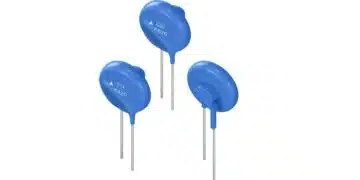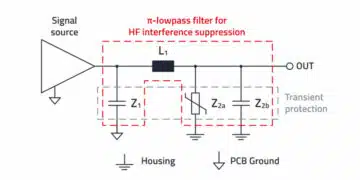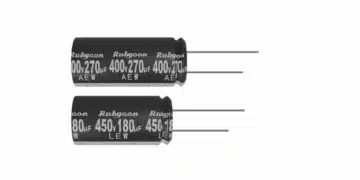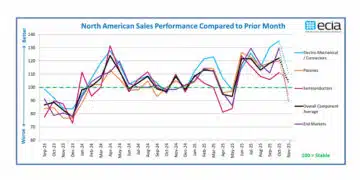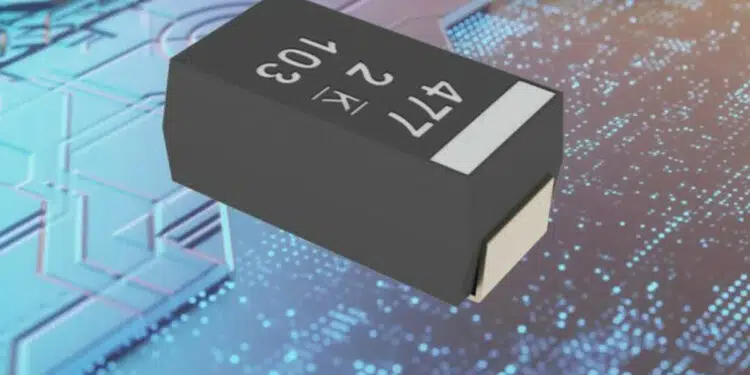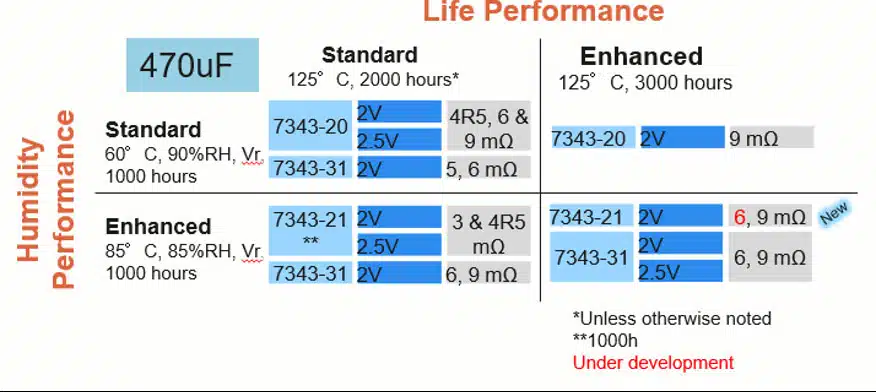KEMET, YAGEO Group, introduces expanded AO-CAP® Aluminum Polymer SMD capacitor with 125ºC / 3000h capability combined with 85ºC, 85% relative humidity at rated voltage up to 1000h in the A798 Series. The product offering was enhanced with the new material setting and manufacturing flow, allowing a specification of endurance life at rated voltage and storage unbiased at 125ºC up to 3000h.
Today’s challenges that designers need to solve are high demands in power management and miniaturization requirements in combination with high-temperature profiles over the lifespan.
KEMET A798 Plus Performance Aluminum Organic Capacitor AO-CAP® is a solid-state aluminum capacitor. The cathode is a solid conductive organic polymer, which results in very low ESR and improved capacitance retention at high frequencies. The construction is based on the stacking of aluminum elements that includes the surface of the dielectric Al2O3 and the polymer counter electrode. External layers are built with carbon and silver.
AO-CAP® may be operated at steady state voltages up to 100% of rated voltage without the need to de-rate. This characteristic is due to the low-stress interface with the dielectric and polymer counter electrodes and is a favorable reliability parameter.
Since there is no liquid electrolyte, the A798 offers long operational lifetimes, low ESR, and high operational temperatures.
Enhancements to the design and selected material upgrades were introduced to expand the 125ºC Life Endurance at a rated voltage of up to 3000h. In addition, the Storage Endurance is also extended to 125ºC while maintaining the humidity bias capability at 85ºC/85%RH/Ur up to 1000h
The product portfolio is limited to low-voltage power rails in typical DC/DC converters, servers, telecommunications, displays, and industrial applications. The new part numbers are described in Table below.


